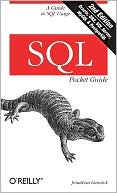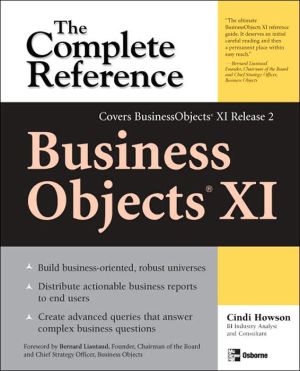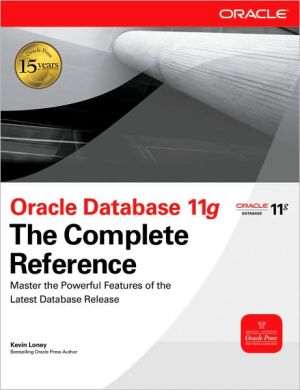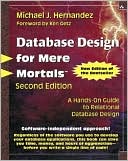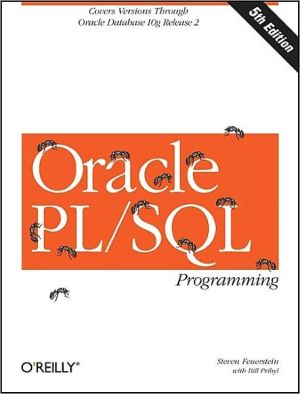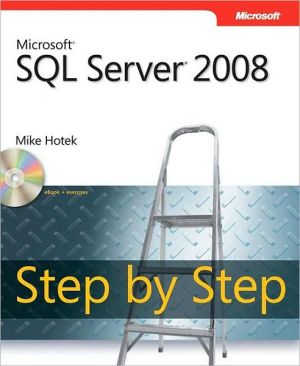Java Database Best Practices
When creating complex Java enterprise applications, do you spend a lot of time thumbing through a myriad of books and other resources searching for what you hope will be the API that's right for the project at hand?\ Java Database Best Practices rescues you from having to wade through books on each of the various APIs before figuring out which method to use! This comprehensive guide introduces each of the dominant APIs (Enterprise JavaBeans, Java Data Objects, the Java Database Connectivity...
Search in google:
When creating complex Java enterprise applications, do you spend a lot of time thumbing through a myriad of books and other resources searching for what you hope will be the API that's right for the project at hand? "Java Database Best Practices" rescues you from having to wade through books on each of the various APIs before figuring out which method to use! This comprehensive guide introduces each of the dominant APIs (Enterprise JavaBeans, Java Data Objects, the Java Database Connectivity API (JDBC) as well as other, lesser-known options), explores the methodology and design components that use those APIs, and then offers practices most appropriate for different types and makes of databases, as well as different types of applications. "Java Database Practices" also examines database design, from table and database architecture to normalization, and offers a number of best practices for handling these tasks as well. Learn how to move through the various forms of normalization, understand when to denormalize, and even get detailed instructions on optimizing your SQL queries to make the best use of your database structure. Through it all, this book focuses on practical application of these techniques, giving you information that can immediately be applied to your own enterprise projects. Enterprise applications in today's world are about data-- whether it be information about a product to buy, a user's credit card information, or the color that a customer prefers for their auto purchases. And just as data has grown in importance, the task of accessing that data has grown in complexity. Until now, you have been left on your own to determine which model best suitsyourapplication, and how best to use your chosen API. "Java Database Practices" is the one stop reference book to help you determine what's appropriate for your specific project at hand. Whether it's choosing between an alphabet soup of APIs and technologies--EJB, JDO, JDBC, SQL, RDBMS, OODBMS, and more on the horizon, this book is an indispensable resource you can't do without.
PrefacePt. IData Architecture1Elements of Database Applications32Relational Data Architecture223Transaction Management53Pt. IIPersistence Models4Persistence Fundamentals755EJB CMP976EJB BMP1137JDO Persistence1298Alternative Persistence Frameworks138Pt. IIITutorials9J2EE Basics15510SQL18811JDBC21312JDO241Index255
\ From Barnes & NobleThe Barnes & Noble Review\ Java developers have an immense number of options for database access. Often, the toughest job is figuring out which approach to take. In Java Database Best Practices, George Reese systematically compares and reviews EJB, JDO, JDBC, serialization, and other Java persistence options. You’ll understand the issues involved, how these options complement each other -- and how to design and code robust solutions with them. \ Reese first reviews data architecture, including component and persistence models, transaction management, and more. There’s an excellent overview of architecting relational databases to support today’s applications while supporting growth and change. Reese reviews modeling, normalization and denormalization, and object-relational mapping, illustrating with many SQL examples.\ Part II drills down into Java persistence frameworks, beginning with chapters on Container Managed Persistence (CMP) in both EJB 1.0 and the dramatically improved EJB 2.0. There’s a full chapter on EJB Bean-Managed Persistence, in which the bean programmer takes responsibility for managing persistence, possibly to support a specific database structure or data destination.\ Reese then turns to JDO, Sun’s technology for transparently persisting plain Java objects in multiple tiers of an enterprise architecture. As he demonstrates, JDO allows for development of persistent applications with very light footprints -- applications that still preserve object relationships in the data store.\ Part III of the book presents practical coding introductions to creating data access solutions that incorporate J2EE, JNDI, JSP, RMI, EJB, SQL, JDBC, and JDO. This may not be everything you’ll ever need to know. (Java Database Best Practices is only 286 pages long.) But it’s certainly everything you need to get rolling. Bill Camarda\ Bill Camarda is a consultant, writer, and web/multimedia content developer. His 15 books include Special Edition Using Word 2000 and Upgrading & Fixing Networks for Dummies, Second Edition.\ \ \

![SQL Queries for Mere Mortals: A Hands-on Guide to Data Manipulation in SQL [For Mere Mortals Series] SQL Queries for Mere Mortals: A Hands-on Guide to Data Manipulation in SQL [For Mere Mortals Series]](/application/data/covers/44/31/9780321444431.jpg)
